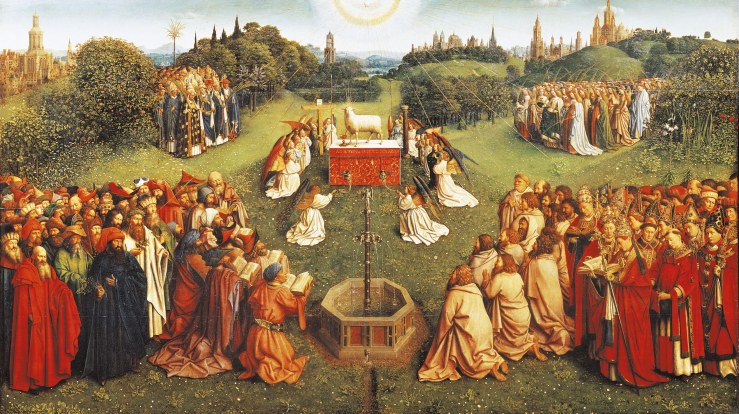I believe I was in my Sophomore year the day when I realized we were going to have a substitute teacher in Theology I. As I walked into class on that Thursday afternoon at first I rolled my eyes because I thought I was going to get a subpar lecture from a 2nd rate professor. I could not be further from the truth.
From the moment the class started our substitute for the day, Dr. Tackett, immediately plunged the class into a narrative about a father teaching his son how to take care of the house. The father taught his son some things, and other things he left as a lesson for another day. But between all of these lesson, there were certain chores that he demanded his son not to attempt. One such chore was the throwing of wood into the fire.
As a student, I immediately correlated this chore with my childhood. There were plenty of moments where my parents told me not to play with the iron, the stove, or the glue gun (which, once upon a time, I left on and super glued the carpet to itself).
Dr. Tackett continued the story. Day after day the child would watch his father throw wood into the fire to keep the house warm. Every day, as the child accomplished chore after chore, he could not comprehend why he wasn’t allowed to throw wood into the fire. He thought to himself “surly throwing wood in the fire is a good thing, because my father does it everyday.” The child loved his father, looked up to him and admired him. The child’s chief desire was to be just like his father; a desire that would fulfill itself through maturity. But as we all know, the child could not comprehend this. The child could not understand that in his immaturity he was incapable of doing everything his father could.

One day, as the child watched the flames whip the air, he recalled how easily his father could toss the large pieces of wood into it. The child then in his immaturity and ignorance grabbed a piece of wood and walked toward the fire. As he approached the fire, his eyes were so fixed on the licking of the flame, that just as he went to toss the wood into the fire his foot clipped the hearth and he fell into the fire. Immediately, the child screamed out in pain! His Father came rushing into the room, pulled him from the flame and immediately started to bandage his wounds!
Dr. Tackett then turns to the class and in his classic dramatic fashion says,
“This is how Irenaeus understood sin.”
Irenaeus of Lyon, one of the early church fathers during the 2nd century, didn’t see sin the same way that many of us do today. Irenaeus did not believe that Adam and Eve ate of the fruit because they wanted to overthrow God and establish themselves as deities, but rather God had always intended for them to be like God. That was the very purpose of creating them in the image of God. Humankind from the very beginning was meant to mature into God likeness as they continuously walked with God. But, just like a starry eyed child, Adam and Eve acted beyond their years, and the ramifications were disastrous. They took on a burden they could not carry, and humanity fell into fires of hell.
Thirteen Going on Thirty
Have you ever met a teenager who thinks they know it all? It’s annoying, isn’t it? On one hand you have this child who needs to grow up, but on the the other because this child thinks that it is an adult they subvert their own maturing process. For Irenaeus, this is the problem with sin. Humankind needs to mature to be like God, but because they ate of the fruit, they think they already are like God. Sin in this way deceives humankind into believing in a sort of “false grown-upness.”
Learning by Example
I remember when I was a kid, I couldn’t tie my shoes. Every one would come up to me and tell me what to do. Some told me the rabbit method and others (aka Spongbob) told me to “loop dee loop and pull and your shoes are looking cool…”
This still doesn’t make sense to me…

No one could explain how to tie shoes to me properly, and so for the longest time I just used laces that I didn’t have to tie. But one day my dad sat me down and said “hey son, watch.” He slowed everything down and proceeded to show me how. Interesting enough when my dad taught me how to tie my shoes he taught me a very specific way.
His way.
When he would loop the laces under each other (you know like step one) he looped it TWICE. To this very day when I tie my shoes I always loop my laces twice…
So what does this have to do with Irenaeus.
What my father was to me in that moment, Jesus is to all of humankind. Before Jesus, humankind had no example to show them what God’s true likeness was (Jn 1:18). Spiritually humankind was like a bunch of children trying to teach each other how to adult, but one day God got down to show us how.
Every moment of Jesus’ life for Irenaeus demonstrates to us how to act God-like. This encompasses every thing that we pass over in the gospel. Everything from his birth in a manger, to the way in which he intentionally frustrated the oppressive powers of authority, to his death and resurrection are meant to be a MODLED LESSON for humanity.
Jesus revealed to humankind what God was like so that humanity can follow his example and start becoming God-like again.
This revelation of who God is, “is finished” on the cross, and the cross becomes our gateway back into the family of God. Here Jesus teaches the first lesson of what it means to be like God, and that is to die to yourself.
Die to your own agenda, die to your false-grownupness, die for others.
When we follow him in his death, we also follow him in his resurrection. When we die to ourselves we are resurrected again as children of God. With Christ as our elder brother leading us by examples we start the process of maturing again. A process that leads humanity toward…
One Big Happy Family Reunion.
The life of Jesus for Irenaeus started an on going process of redemption of ALL things back toward God. As Christ is continuously revealed to the world through the church, salvation spreads. The proclamation of the gospel in this way is NOT seen as simply a declaration of creeds but rather an all encompassing life-style that mirrors the life-style of Christ.
For Irenaeus, the second coming of Christ is a day when ALL THINGS have been redeemed back into God’s family through Christ. The new earth for Irenaeus is not a re-creation, but rather a wondrous redemption of THIS WORLD. In this new day Humanity as well as heaven and earth become participants in the life of God, as they fix their eyes are fixed on Christ.

“But Nathan, What does this Mean?”
When we really grasp the theology of Irenaeus it should change us. In Irenaeus’ theology there is no space for Christians who attempt to shrug off responsibility. We can’t just say that we got our “get out of hell free card” and resign ourselves to a nice comfy lifestyle with two and a half kids and a white picket fence. Looking at Christ as our example calls us to action! We must take responsibility for our political agendas, our social agendas, and our ecological agendas.
Actually we need to simply DIE to our agendas and adopt the agenda of Jesus. Jesus cared for the victim, the poor, and even the birds and the bees. Jesus cares about redeeming it ALL!
To be called a “child of God” and take that to its furthest conclusion should humble you. We are children who act in immature ways, and sometimes we do stupid stuff and embarrass our family. But, if we stay humble, even though we will make mistakes, God can use us to better this world. As we participate in the salvation process with Christ, we can have hope in a coming day when all the world comes back together under Christ and starts maturing again closer and closer to God.
Ultimately the Theology of Irenaeus challenges us to ask ourselves “who Jesus was?” “how should we responds to that?” and “what the world could be like if we actually did?”
If you would like to read more about Irenaeus of Lyon here are some books I referenced:
A History of Christian Thought by Justo L. González
A History of the Doctrine of the Work of Christ by Robert S. Franks
Irenaeus of Lyons by Eric Francis Osborn
Irenaeus on Creation: the Cosmic Christ and the Saga of Redemption by Matthew C. Steenberg
Irenaeus on The Christian Faith : A Condensation of Against Heresies by James R Payton
The last photo is the Ghent Altarpiece also known as Adoration of the Mystic Lamb. It has been attributed to Hubert and Jan van Eyck.
